Apologies for the late publishing of this article. A family emergency necessitated a swift relocation to England. Luckily, I have a few walks I’ve done since the Tokaido stored up and ready to be published, so until I’ve run out of those, we’re good to go!
The Tokaido was over. And thank goodness! Now, I needed a new walk. When I was walking the route of the Japan Standard Time line, I came across a series of paths (albeit poorly marked) called the Kinki Shizen Hodo (Kinki area nature trails). The Kinki area contains Osaka, Hyogo prefecture, Mie prefecture, Kyoto prefecture and Wakayama prefecture. Sometime, a decade or two ago, (this needs some research) it was decided to build a network of nature trails across Japan. There’s even a nature trail version of the Tokaido from Kyoto to Tokyo.
Well, I didn’t want suburbs after the Tokaido, so nature trails sounded ideal. As I looked at the map, I realised I could head west, around the Inland Sea, all the way around western Japan. I might even include a few of the Inland Sea islands.
I’d already headed east from Kobe as a filler walk, encountering sake distilleries and steelworks. Now, it was time to head west from Kobe, following the coast until I met up with the Kinki Shizen Hodo at Akashi City.
I had to work on Saturday morning, so after lunch in a quiet corner of a Bistro restaurant, I set off for Kobe’s Harborland, a collection of shops and attractions (including an Anpanman museum) that form the centrepiece of Kobe’s waterfront. The wrapping was beginning to come off Port Tower, a red trellis pepper-pot that had been undergoing refurbishment for a year or more.
I passed a band, trying hard to whip a bemused crowd into excitement, then through the wooden decking and crowds of a shopping centre and out, overlooking the submarines and cranes of the Kawasaki shipyards.

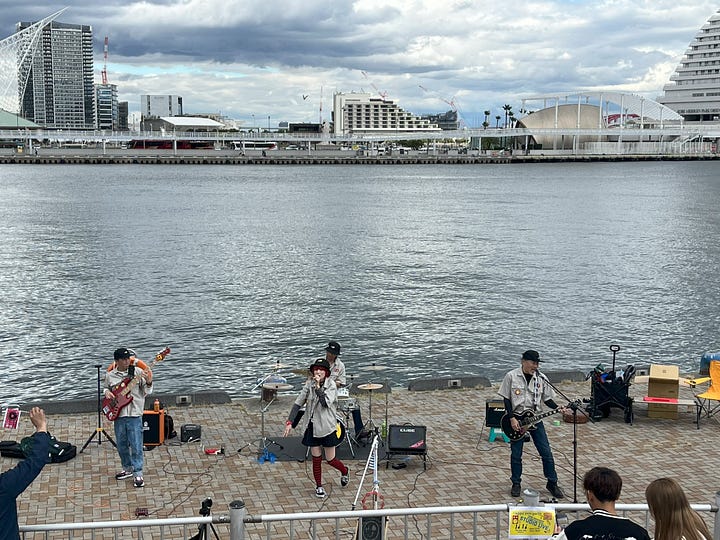
Behind these, everything changed. Crowds gone. Tourists gone. Empty streets. Just the odd truck looking for its delivery point.

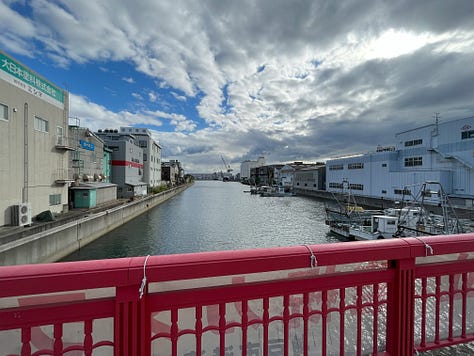
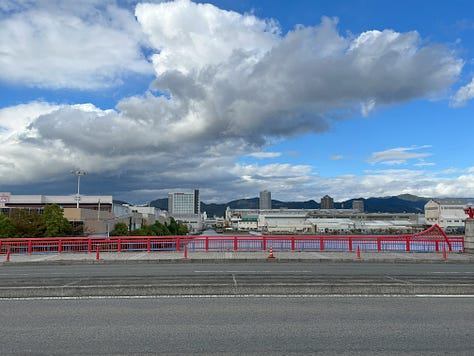
Usually, Japan doesn’t have much in the way of cloudscapes. Skies are often dull ripplings of grey after the deep blues and rocket-launch cumulonimbus of late summer. But today was different - the clouds unfurled and tore apart, revealing sun and blue sky, before gathering once more and seeming to threaten rain.
I meandered around a waterfront, passing Taisho-era derelict curves, dock workers, and huge grey industrial buildings. Kawasaki became Mitsubishi, then the Hyogo Canal marked the end of the shipyards, and big, brand-new order-fulfillment warehouses and housing estates took over. “Life” said the car, but it was abandoned, surrounded by goldenrod weeds flowering on wasteland.
Farther on, I found one of the pillars that failed, tipping the highway over when the earthquake struck Kobe on January 17th 1995. The concrete in the mesh of steel reinforcement crumbled like fried tofu, leaked out, and then the steel reinforcements failed. Which is why, concrete pillars over a certain height now tend to have metal jackets around them.
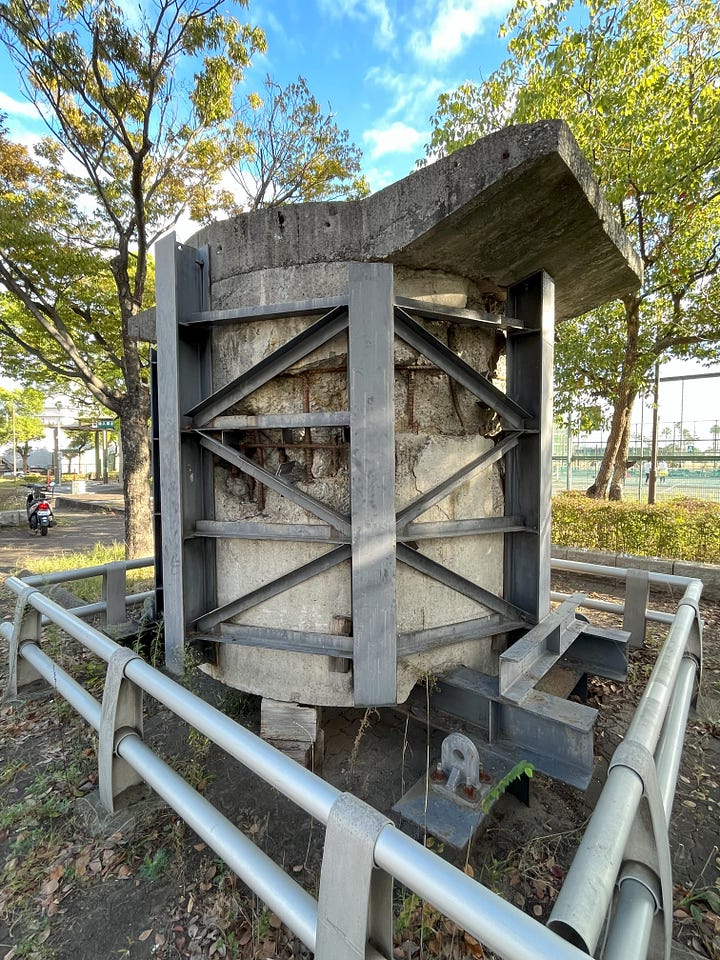
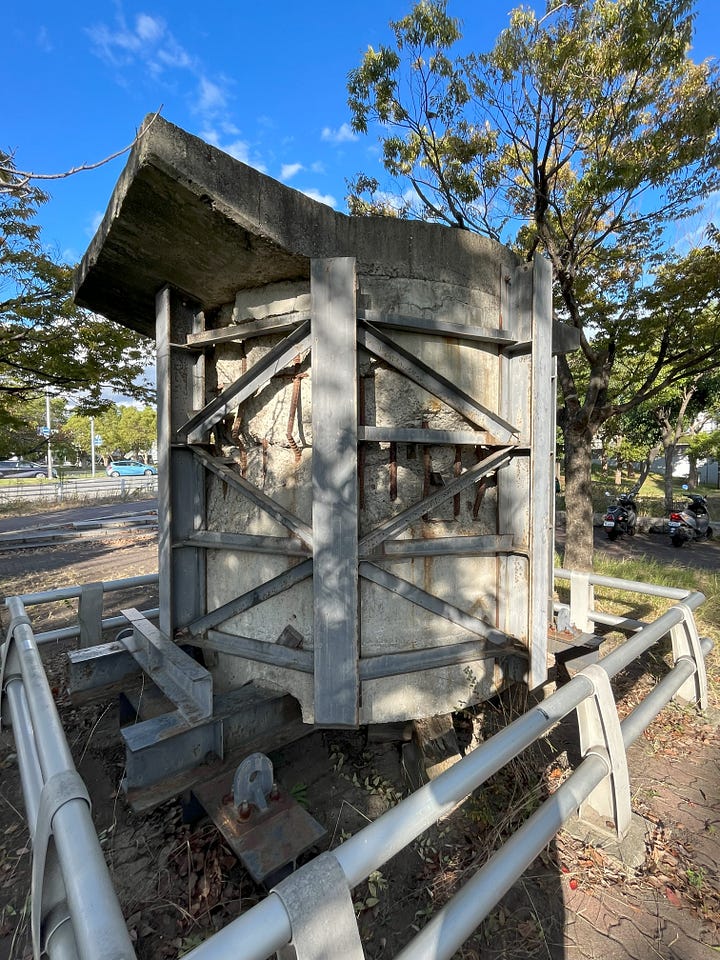
Even farther on, Suma Aquarium was being rebuilt with Jurassic World-style viewing areas for pools that will presumably house dolphins and orcas. The aquatic mammals will probably have more space than they did in the old Suma Aquarium, but it seems strangely anachronistic to build these as a central feature.
A colleague had raved about the new Red Lobster seafood restaurant near Suma Beach, but not having this chain of restaurants in the UK, I was distinctly unimpressed. It felt too oshare - stylish. I liked Suma Beach’s slight tackiness.
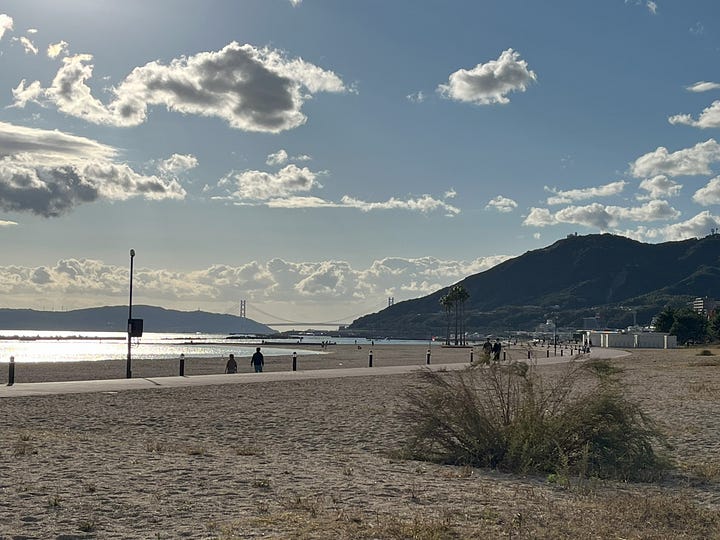
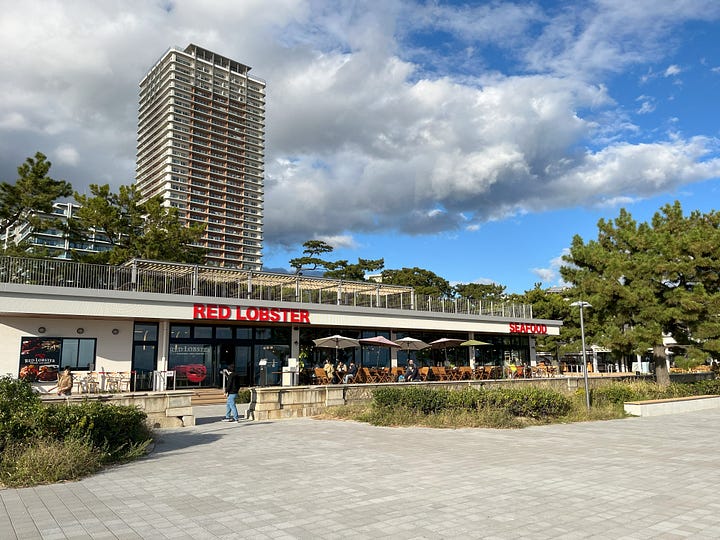
The relocated Wadamisaki lighthouse is the kind of feature I like to see. Tucked away in the corner of a park, semi-forgotten, it was built in 1867 by an English engineer - Richard Henry Branton, as a guide for ships rounding the Wada promontory and entering Kobe port.
The English connection didn’t stop there. Some distance away, a signboard marked the site of an old western-style villa for a Mr Jonas. There were many villas along this stretch of coast, both for foreigners and for the upper-crust of Japanese society like the Mitsui family.
But it was time to leave the remnants of Japan’s upper crust behind and head up the hill to my home.





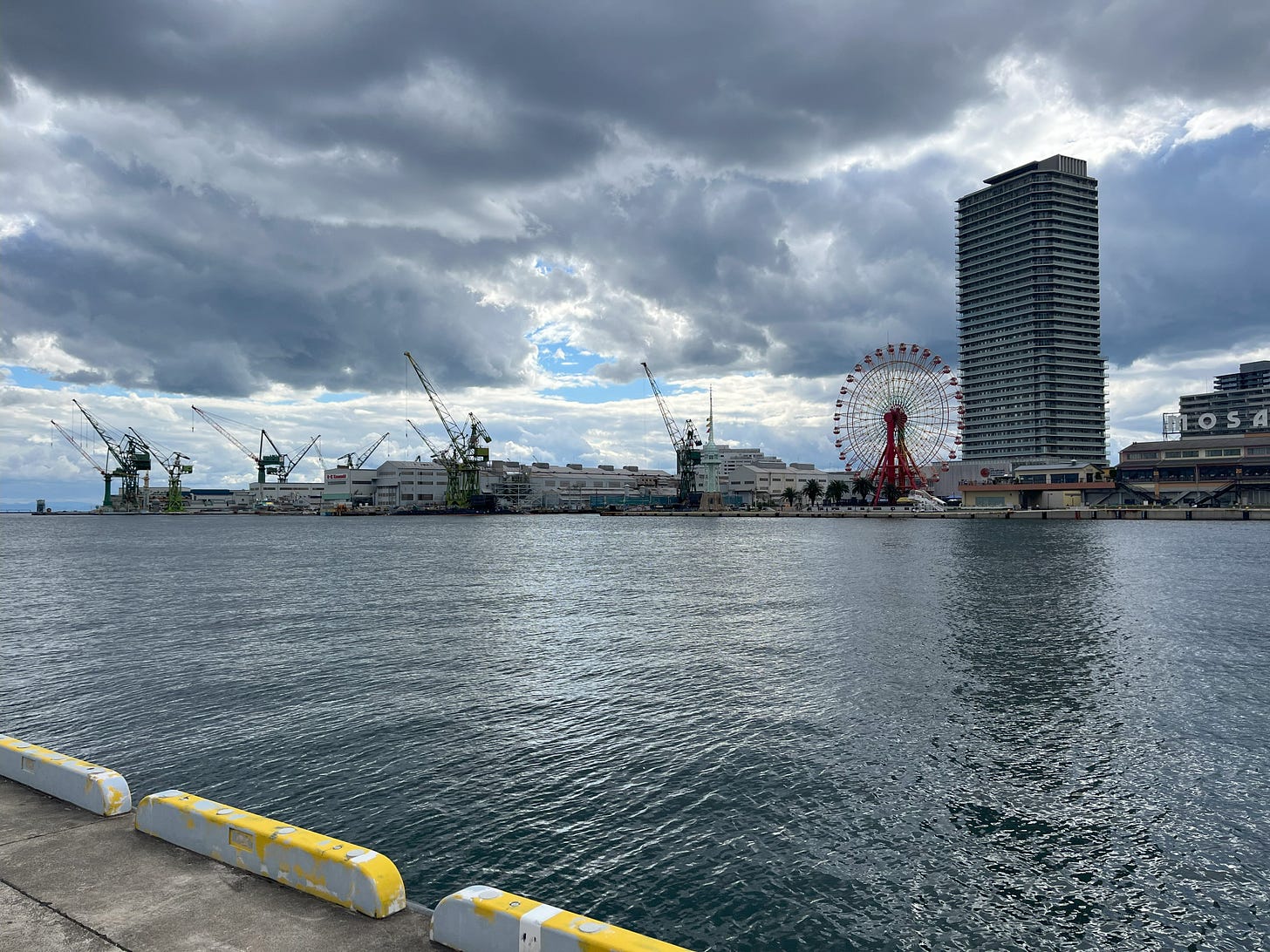
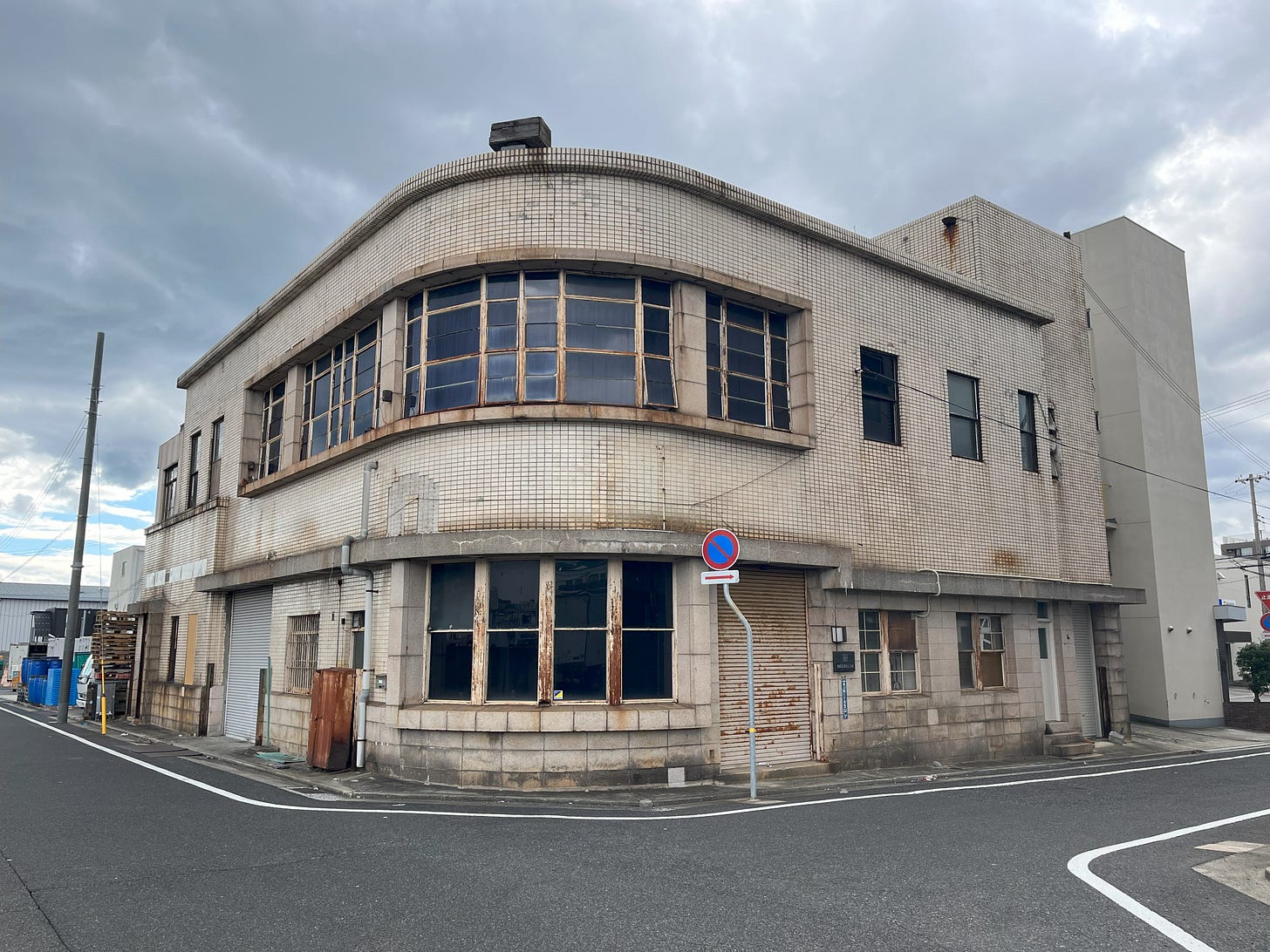
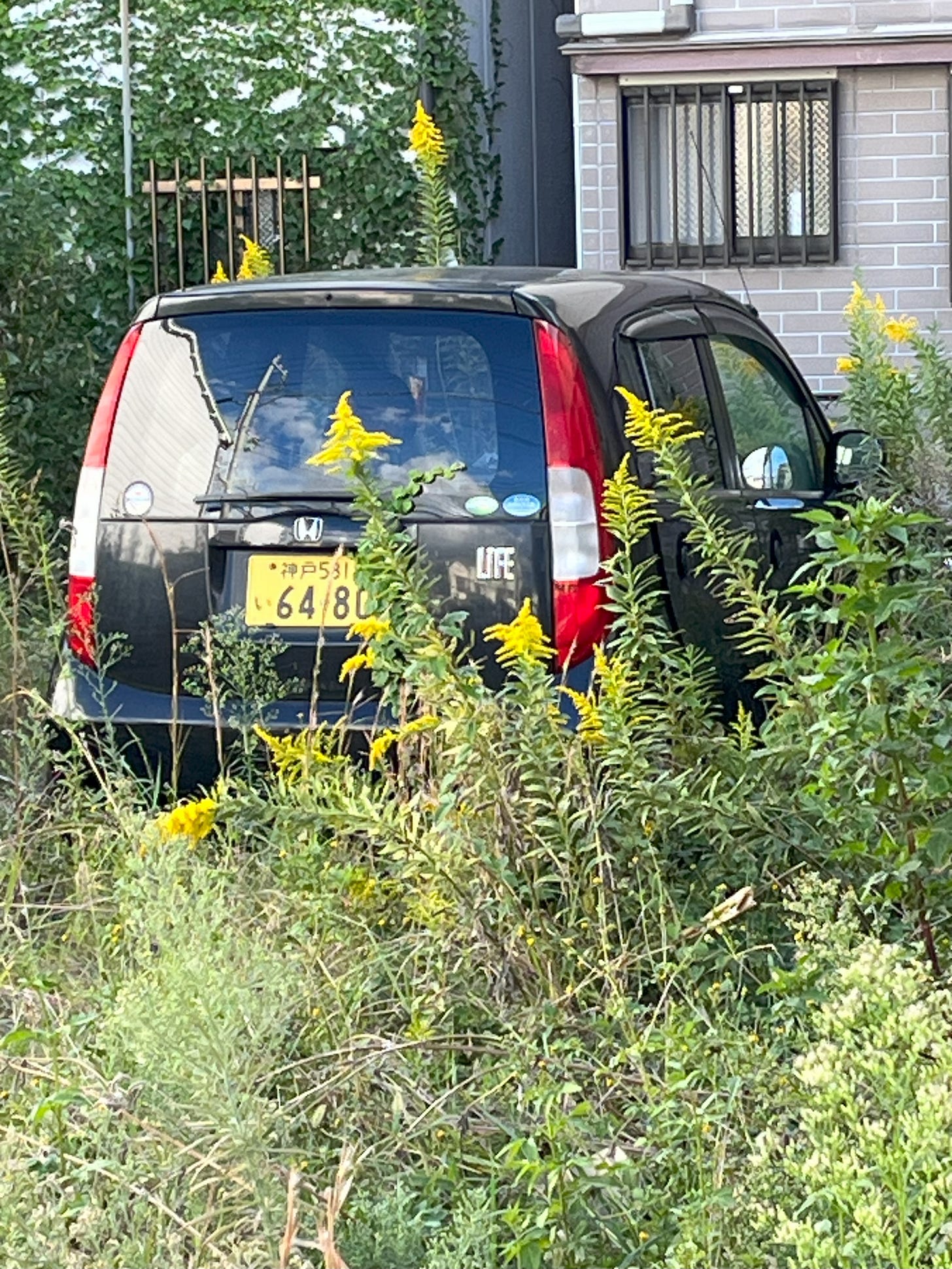
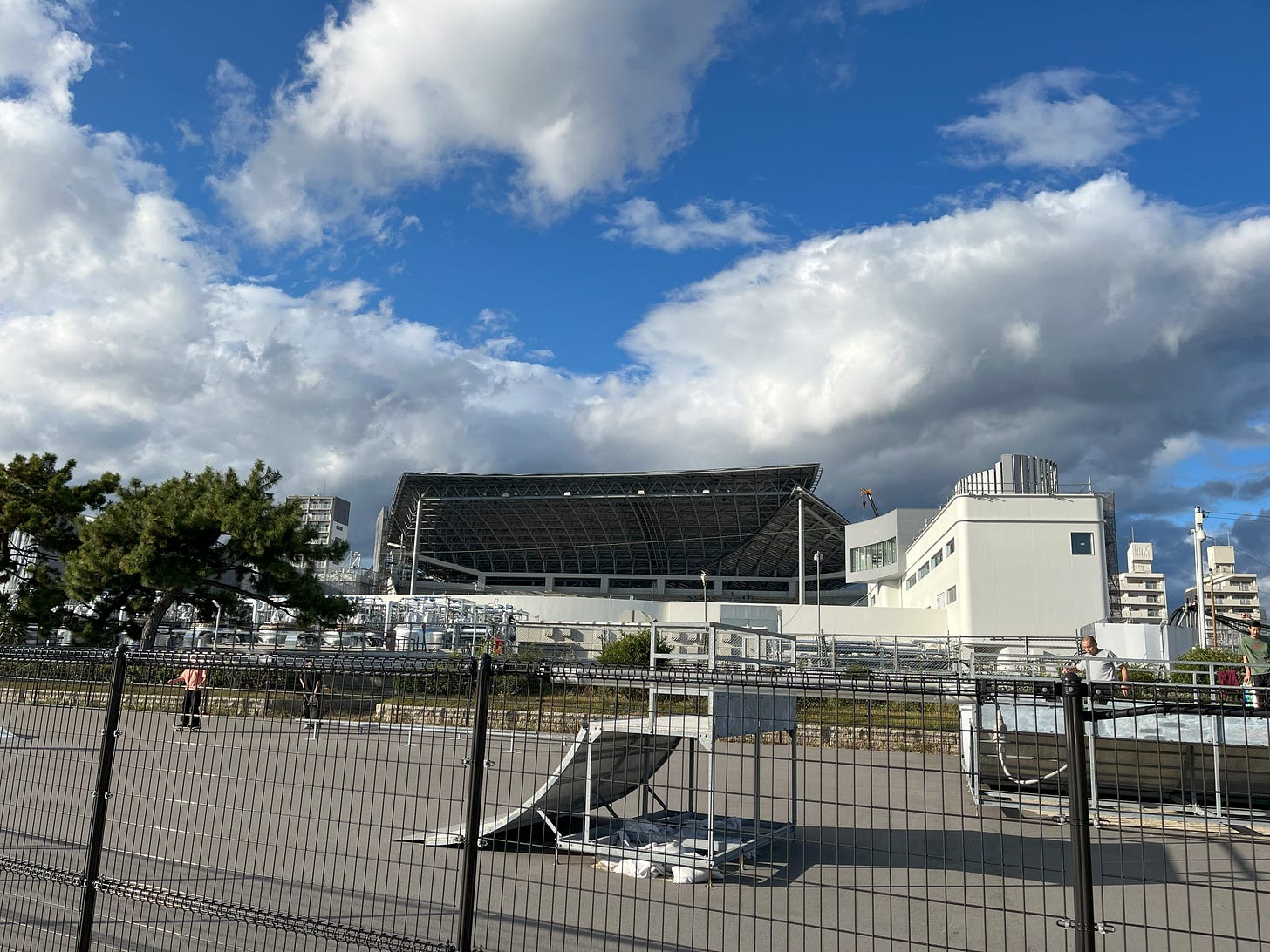

Thank you for the wonderful post. I hope the relocation goes smoothly and you will keep posting here :)
I remember the toppling of that highway in Kobe well. Amazing destruction. Yet after that I don’t think one has fallen again in Japan.
Agree with Gianni. Loved the rocket launch clouds. Oh and the band!!!